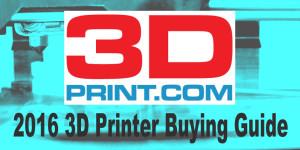 So you want to buy a 3D printer, but you don’t know where to start. I don’t blame you, there are a lot of 3D printers out there from a lot of manufacturers with names that you’ve never heard of, it is enough to confuse and scare off anyone. So we’ve put together a list of the best and most popular 3D printers on the market from all price points, so this should narrow your search down. Just decide what type of 3D printer you’re looking for, what you want to do with it and be honest about what your level of technical skill is and there is bound to be something that fits the bill on this list. However, there are a few things that you should know about 3D printing before you go shopping.
So you want to buy a 3D printer, but you don’t know where to start. I don’t blame you, there are a lot of 3D printers out there from a lot of manufacturers with names that you’ve never heard of, it is enough to confuse and scare off anyone. So we’ve put together a list of the best and most popular 3D printers on the market from all price points, so this should narrow your search down. Just decide what type of 3D printer you’re looking for, what you want to do with it and be honest about what your level of technical skill is and there is bound to be something that fits the bill on this list. However, there are a few things that you should know about 3D printing before you go shopping.
First off, 3D printing is hard. When I say that a 3D printer is easy to use, you need to understand that I’m speaking in relative terms. All 3D printing requires a lot of preparation, and post processing to get the best results, and it isn’t always going to be easy to get your 3D printer to do what you want it to do. There is no such thing as a hassle-free 3D printer, but the assumption is that if you’re interested in using 3D printers for either work or play, that you’re willing to get your hands a little dirty. I’m not trying to dissuade you from buying a 3D printer, but I just want you to understand that even what the industry calls a “plug and play” 3D printer is still going to take 30 to 60 minutes to set up and get printing.
You also need to know that there is no perfect 3D printer. There is no 3D printer that will do everything, and you’re going to have to carefully consider what it is that you want your 3D printer to do before you decide to buy one. Designers and manufacturers have to strike a delicate balance between three categories: Affordability, Functionality and Quality. The reality is, you’re probably only ever going to get two of the three, you just need to decide which two are the most important to you.
And finally, you need to know that 3D printing is emergent technology, so it is going to be constantly changing, getting better and evolving in ways that is hard to imagine today. That is a very good thing, it makes the technology great as a hobby, but also a fantastic way to add some flexibility and versatility to your business. (You can also check out our 2016 3D Scanner Buying Guide for more details on that side of the technology!)
The 2017 3D printer buying guide is available here.
Starter 3D Printers ($600 and under)
So you don’t know much about 3D printing but you want to give it a try? Well it is a lot easier to get started these days, and there is in fact an entire class of inexpensive 3D printers designed specifically for new users. Starter 3D printers are not going to be the highest-quality 3D printers on the market, and they’re not going to produce the best 3D prints, but they are a great way to get your feet wet and learn how to do the basics before you move on and upgrade to a higher-quality printer. And because starter 3D printers are made to be easy and fun to use, you’ll likely find yourself playing around with it long after you’ve gotten a bigger, more serious machine.
Price: $399
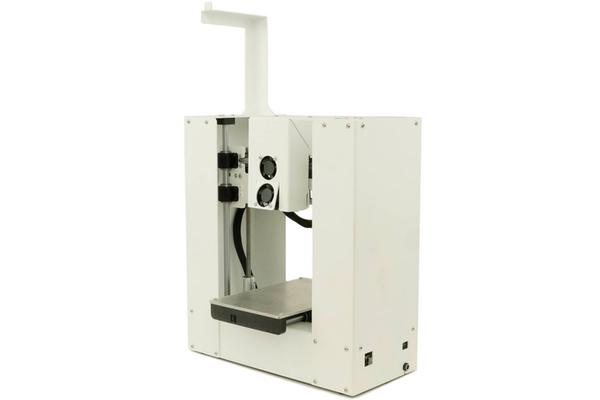 The Play, any way that you look at it, is probably the best starter 3D printer on the market. It has a print quality higher than anything else in its class, a sturdy all-metal body that makes it feel like it should be a lot more expensive than it is, and a gorgeous yet simple design that is just pleasant to look at. If you’re looking for a kit experience, then the Play is available as one, but since it’s the same price as the assembled it just isn’t worth it. There are much better kit experiences available, and because the Play relies on the sturdy metal body for its high print quality, you’re just better off letting the experts handle building it. The Play won’t be the easiest starter 3D printer to use, but it will likely end up being the best experience with one.
The Play, any way that you look at it, is probably the best starter 3D printer on the market. It has a print quality higher than anything else in its class, a sturdy all-metal body that makes it feel like it should be a lot more expensive than it is, and a gorgeous yet simple design that is just pleasant to look at. If you’re looking for a kit experience, then the Play is available as one, but since it’s the same price as the assembled it just isn’t worth it. There are much better kit experiences available, and because the Play relies on the sturdy metal body for its high print quality, you’re just better off letting the experts handle building it. The Play won’t be the easiest starter 3D printer to use, but it will likely end up being the best experience with one.
Printer Type: FDM
Material: PLA
Resolution: 50 Microns
Build Area: 100 x 100 x 130 mm (3.9 x 3.9 x 5.1 inch)
Pros: High-quality full metal construction, high-quality prints, fast and reliable, heated bed upgrade available, fast printing speeds
Cons: Small print envelope, loud while printing, no WiFi, needs third party software
Price: $399
 The number one desktop 3D printer manufacturer in the world right now is XYZprinting, and they are also producing one of the largest, most affordable and diverse families of 3D printers around. The da Vinci Jr is their starter 3D printer that has been optimized for those new to 3D printing who are just looking for a cheap, fun 3D printer to play with. The Jr 1.0w is the WiFi connectable version of their starter 3D printer, and at only an extra $25 it’s just not even worth considering the non-WiFi version that is also available. Along with WiFi, the Jr 1.0w has also upgraded a few parts and made it easier than ever to use. While the company hasn’t always had the best track record when it comes to customer support, XYZprinting has made some real progress in that area and the online community is also a great resource. The print quality is what you’d expect for a starter 3D printer, but it is a great machine that works as an excellent introduction to the world of 3D printing.
The number one desktop 3D printer manufacturer in the world right now is XYZprinting, and they are also producing one of the largest, most affordable and diverse families of 3D printers around. The da Vinci Jr is their starter 3D printer that has been optimized for those new to 3D printing who are just looking for a cheap, fun 3D printer to play with. The Jr 1.0w is the WiFi connectable version of their starter 3D printer, and at only an extra $25 it’s just not even worth considering the non-WiFi version that is also available. Along with WiFi, the Jr 1.0w has also upgraded a few parts and made it easier than ever to use. While the company hasn’t always had the best track record when it comes to customer support, XYZprinting has made some real progress in that area and the online community is also a great resource. The print quality is what you’d expect for a starter 3D printer, but it is a great machine that works as an excellent introduction to the world of 3D printing.
Printer Type: FDM
Material: PLA
Resolution: 100 Microns
Build Area: 150 x 150 x 150 mm (5.9 x 5.9 x 5.9 inch)
Pros: Affordable, large build area for class, easy to setup and use, WiFi connectivity
Cons: Low resolution, plastic casing, proprietary filament, iffy customer support
Price: $349 to $449
 The M3D Micro is the result of the single most successful 3D printer Kickstarter in history, and it is easy to see why. Not only is the printer robust, but it is full of clever features that make the Micro a ton of fun to use. It can be battery powered and carried around, and the printing head has a motion sensing chip that will keep the printer going even while on the go without causing misprints or glitches. The body is made from carbon fiber rods and it has a single piece beautiful injection molded body that sets it apart from everything else out there. It isn’t the fastest 3D printer on the block, and it has an oddly shaped printing area, but at this price it is really hard to imagine anyone being disappointed with the Micro.
The M3D Micro is the result of the single most successful 3D printer Kickstarter in history, and it is easy to see why. Not only is the printer robust, but it is full of clever features that make the Micro a ton of fun to use. It can be battery powered and carried around, and the printing head has a motion sensing chip that will keep the printer going even while on the go without causing misprints or glitches. The body is made from carbon fiber rods and it has a single piece beautiful injection molded body that sets it apart from everything else out there. It isn’t the fastest 3D printer on the block, and it has an oddly shaped printing area, but at this price it is really hard to imagine anyone being disappointed with the Micro.
Printer Type: FDM
Material: PLA, ABS, Nylon
Resolution: 50 Microns
Build Area: Base: 109 x 113 x 74 mm (4.4 x 4.3 x 2.9 inch) – Above 74mm Base: 91 x 84 mm (3.6 x 3.3 inch)
Pros: Motion sensor chip prevents misprints, carbon fiber frame, injection molded body, auto calibrating, multiple colors available
Cons: Proprietary software, odd-shaped build area, slow printing speeds, no WiFi
Price: $499 – $649
 FlashForge 3D printers are one of the secret weapons of the 3D printing industry. Their machines aren’t flashy, they don’t have a ton of bells and whistles, but what they do have is quality machines with some nice features. The Finder has plenty of great features usually not available on starter 3D printers, like touchscreen controls, WiFi connectivity, and an easy to use interface. Like all the printers in this class, it isn’t going to be perfect, but once you get the hang of using the Finder, I can’t imagine that you’d be disappointed.
FlashForge 3D printers are one of the secret weapons of the 3D printing industry. Their machines aren’t flashy, they don’t have a ton of bells and whistles, but what they do have is quality machines with some nice features. The Finder has plenty of great features usually not available on starter 3D printers, like touchscreen controls, WiFi connectivity, and an easy to use interface. Like all the printers in this class, it isn’t going to be perfect, but once you get the hang of using the Finder, I can’t imagine that you’d be disappointed.
Printer Type: FDM
Material: PLA
Resolution: 40 microns
Build Area: 140 x 140 x 140 mm (5.5 x 5.5 x 5.5 inch)
Pros: Excellent print quality, quiet operation, WiFi connectivity, removable printing bed, user friendly, auto leveling bed
Cons: Bed leveling is time consuming, poorly translated assembly instructions, proprietary filament, no heated bed option
Price: $599
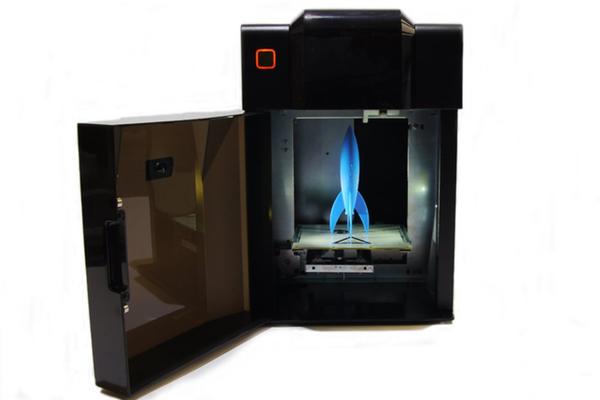 The Up! Mini is the one entry on this list that I actually can’t believe doesn’t cost a lot more than it does. Not only does it have an enclosed print area that allows it to use high-temperature materials successfully, but it has one of the highest rates of successful prints of any printer on this list. This may be a starter 3D printer, but it’s one of the best, and is an ideal way to learn how to use advanced features that typically are only available on higher-end 3D printers.
The Up! Mini is the one entry on this list that I actually can’t believe doesn’t cost a lot more than it does. Not only does it have an enclosed print area that allows it to use high-temperature materials successfully, but it has one of the highest rates of successful prints of any printer on this list. This may be a starter 3D printer, but it’s one of the best, and is an ideal way to learn how to use advanced features that typically are only available on higher-end 3D printers.
Printer Type: FDM
Material: PLA, ABS, ABS+
Resolution: 200 microns
Build Area: 120 x 120 x 120 mm (4.75 x 4.75 x 4.75 inch)
Pros: Reliable, enclosed build area, very high print success rate, heated bed, quiet, easy to use
Cons: Low print resolution, closed source, proprietary filament
Price: $599 ($635 with upgraded heated bed)
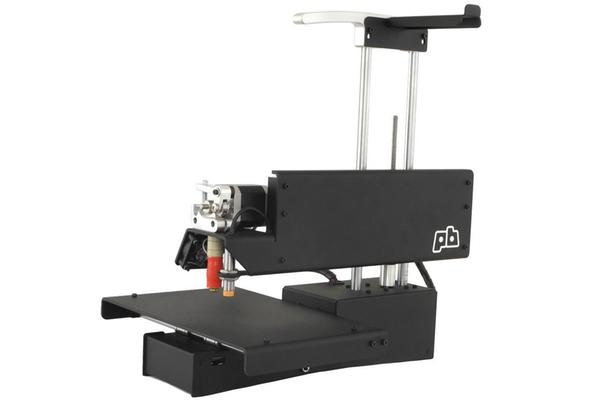 Like its little brother the Play, the Printrbot Simple is far more 3D printer than you would typically get for this price point, and it has room for tons of great upgrades, including a heated bed and an extended build envelope. Not only will the Simple produce better 3D prints than many more expensive printers, it will do so reliably and without a lot of hassle. The full-metal body keeps everything stable which allows the Simple to print some great things at a great price without breaking the bank.
Like its little brother the Play, the Printrbot Simple is far more 3D printer than you would typically get for this price point, and it has room for tons of great upgrades, including a heated bed and an extended build envelope. Not only will the Simple produce better 3D prints than many more expensive printers, it will do so reliably and without a lot of hassle. The full-metal body keeps everything stable which allows the Simple to print some great things at a great price without breaking the bank.
Printer Type: FDM
Material: PLA, (ABS, Exotic Materials with heated bed upgrade)
Resolution: 50 Microns
Build Area: 150 x 150 x 150 mm (6 x 6 x 6 inch)
Pros: Auto-leveling, high print quality, open source, solid metal construction
Cons: Loud while printing, no WiFi, needs third party software
LOW-COST 3D PRINTERS ($600 to $1,300)
Low-cost 3D printers are a midpoint between starters and the more advanced, high-end workhorses that have a ton of options, but start to get pricey. These 3D printers are affordable, have lots of features that make 3D printing easier and offer a much higher level of quality prints. While all of these 3D printers are just as capable as some of the more expensive alternatives on this list, they are just in smaller, more manageable packages. This is where you want to look if you’re looking for a more robust starter 3D printer experience, or if you’re looking for a basic, hassle-free 3D printer just for fun.
Price: $849
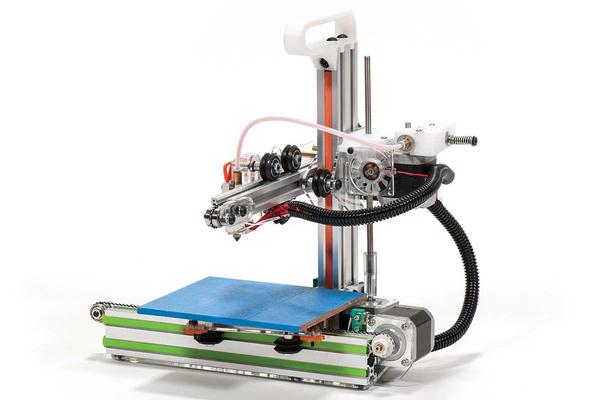 The Bukito is a value at twice the price, and has a few features that make it truly stand in a class to itself. Not only can the Bukito run on the go, and by on the go I mean literally while it’s being carried around by the handle, but it won’t skip a beat and you’ll end up with a perfect print every time. In fact, it’s actually pretty difficult to not produce a good print on a Bukito, and it’s so easy to use that this is a great starter 3D printer that will be your favorite long after you’ve moved on to bigger 3D printing pastures. And if you’re feeling adventurous, Deezmaker offers the Bukito as an assemble yourself kit for $50 less.
The Bukito is a value at twice the price, and has a few features that make it truly stand in a class to itself. Not only can the Bukito run on the go, and by on the go I mean literally while it’s being carried around by the handle, but it won’t skip a beat and you’ll end up with a perfect print every time. In fact, it’s actually pretty difficult to not produce a good print on a Bukito, and it’s so easy to use that this is a great starter 3D printer that will be your favorite long after you’ve moved on to bigger 3D printing pastures. And if you’re feeling adventurous, Deezmaker offers the Bukito as an assemble yourself kit for $50 less.
Printer Type: FDM
Material: PLA, PET
Resolution: 50 Microns
Build Area: 125 x 150 x 125 mm (5 x 6 x 5 inch)
Pros: Very reliable, portable, can run off battery for outdoor printing, no calibration needed, open source
Cons: No heated bed available, no WiFi, no on-printer controls
Price: $1,250
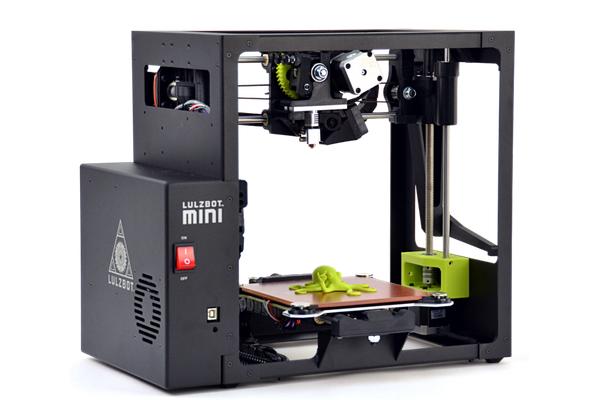 The award-winning LulzBot Mini is about as top of the line as you’re going to get at this price point, and what you get is a lot of printer. The Mini can print with almost any filament type flawlessly, and needs very little in the way or maintenance or tweaking. This may not be the prettiest 3D printer on the market, but it’s a workhorse that will keep going long after you’ve given up and gone to bed. And LulzBot has tons of upgrade options to allow the Mini to survive long past most comparable 3D printers’ typical shelf life.
The award-winning LulzBot Mini is about as top of the line as you’re going to get at this price point, and what you get is a lot of printer. The Mini can print with almost any filament type flawlessly, and needs very little in the way or maintenance or tweaking. This may not be the prettiest 3D printer on the market, but it’s a workhorse that will keep going long after you’ve given up and gone to bed. And LulzBot has tons of upgrade options to allow the Mini to survive long past most comparable 3D printers’ typical shelf life.
Printer Type: FDM
Material: PLA, ABS, PETT, PETG, Nylon, HIPS, PVA, Exotics
Resolution: 50 Microns
Build Area: 152 x 152 x 158 mm (6 x 6 x 6.2 inch)
Pros: Print quality, customer service, large material selection, user friendly, open source, self-leveling bed
Cons: Utilitarian design, small build envelope for price, no WiFi
Price: $1,199
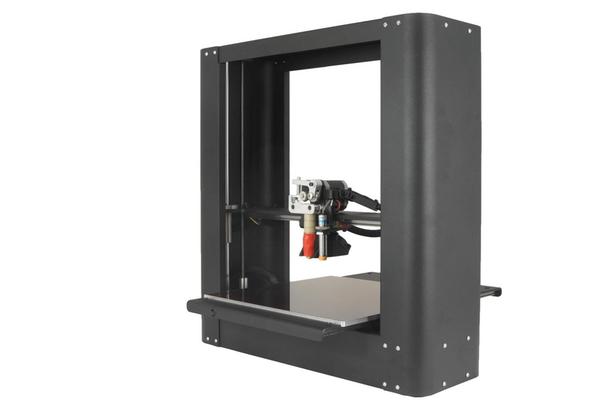 The big, beefy brother of the Printrbot family is actually a whole lot of printer, for not a whole lot of price. Just like all of the Printrbots, all of which made it to this list because of their high quality, the Plus is a fantastic 3D printer that other manufacturers would probably sell for a lot more. Make no mistakes about it, this is a top-of-the-line 3D printer and a not top-of-the-line price. It is also easy to upgrade, has a large printing area and is completely open source. If you’re looking to upgrade from a starter 3D printer, but don’t want to pay too much, then the Printrbot Play is a great option.
The big, beefy brother of the Printrbot family is actually a whole lot of printer, for not a whole lot of price. Just like all of the Printrbots, all of which made it to this list because of their high quality, the Plus is a fantastic 3D printer that other manufacturers would probably sell for a lot more. Make no mistakes about it, this is a top-of-the-line 3D printer and a not top-of-the-line price. It is also easy to upgrade, has a large printing area and is completely open source. If you’re looking to upgrade from a starter 3D printer, but don’t want to pay too much, then the Printrbot Play is a great option.
Printer Type: FDM
Material: PLA, ABS
Resolution: 50 Microns
Build Area: 250 x 250 x 265 mm (9.8 x 9.8 x 10.4 inch)
Pros: Auto-leveling, high print quality, open source, solid metal construction, large build volume, optional dual extruders
Cons: Loud while printing, no WiFi, needs third party software
Price: $999
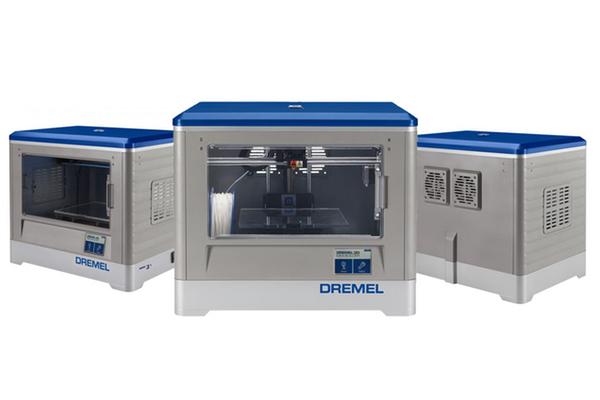 While the Dremel Idea Builder is a modification of the tech from the FlashForge Dreamer, and has a few less features, don’t let that fool you into thinking that this isn’t a great 3D printer. Not only did the components and tech got a huge upgrade in quality, but it was simplified to reduce maintenance needs, and increase the printing area. The Idea Builder is almost too easy to use, and is quite dependable and durable. And because it is manufactured by Dremel, the Idea Builder has some of the best customer support around.
While the Dremel Idea Builder is a modification of the tech from the FlashForge Dreamer, and has a few less features, don’t let that fool you into thinking that this isn’t a great 3D printer. Not only did the components and tech got a huge upgrade in quality, but it was simplified to reduce maintenance needs, and increase the printing area. The Idea Builder is almost too easy to use, and is quite dependable and durable. And because it is manufactured by Dremel, the Idea Builder has some of the best customer support around.
Printer Type: FDM
Material: PLA
Resolution: 100 Microns
Build Area: 230 x 150 x 140 mm (9 x 5.9 x 5.5 inch)
Pros: Easy to use, small footprint, good build volume, excellent customer support, enclosed printing bed
Cons: No heated bed option, no WiFi, closed source, proprietary filament, repackaged version of FlashForge Dreamer
Price: $999 to $1,199
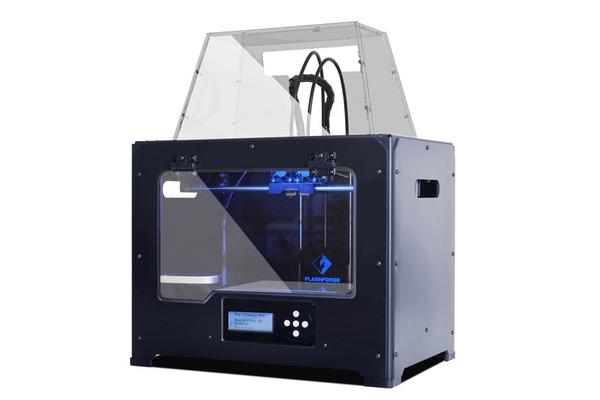 If you’re looking for a 3D printer with high-end-quality features but without the high price tag, then the FlashForge Creator Pro might be an ideal option. The fact that you can get a heated bed, dual extruders and an enclosed printing bed on a machine that costs less than a thousand bucks is almost too good to be true. You’ll need to have a bit of 3D printing know-how to keep this printer running in top shape, but if this isn’t your first time to the rodeo, or you don’t mind learning to tinker with new-to-you tech, then you can’t go wrong with the Creator Pro.
If you’re looking for a 3D printer with high-end-quality features but without the high price tag, then the FlashForge Creator Pro might be an ideal option. The fact that you can get a heated bed, dual extruders and an enclosed printing bed on a machine that costs less than a thousand bucks is almost too good to be true. You’ll need to have a bit of 3D printing know-how to keep this printer running in top shape, but if this isn’t your first time to the rodeo, or you don’t mind learning to tinker with new-to-you tech, then you can’t go wrong with the Creator Pro.
Printer Type: FDM
Material: PLA, ABS, Exotic materials
Resolution: 100 Microns
Build Area: 225 x 145 x 150 mm (8.8 x 5.7 x 5.9 inch)
Pros: Heated bed, dual extruders, dependable, enclosed print envelope, affordable, open source, sturdy metal frame
Cons: Included software is outdated, noisy, no WiFi, not plug and play
Ultimaker Original+
Price: $995
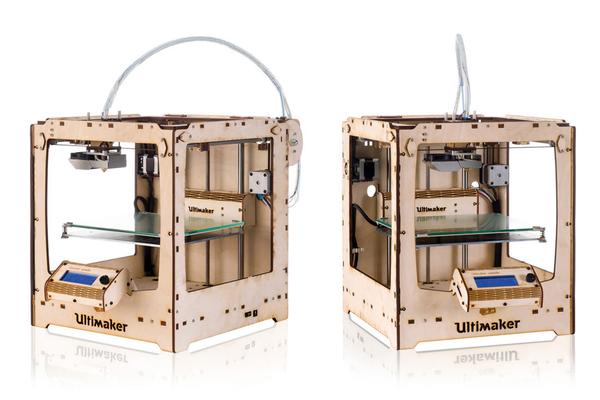 Provided you don’t mind putting together a kit, the Ultimaker Original+ might be one of the best bargains on the market. When assembled and calibrated correctly, there are very few 3D printers that can match the quality of the Ultimaker, and even the original wooden kit is still capable of producing some of the highest-quality prints possible. If you’re looking for a chance to build your own 3D printer, but don’t want to worry about quality or support, then this is the perfect kit for you. And at less than a thousand dollars, it’s a steal.
Provided you don’t mind putting together a kit, the Ultimaker Original+ might be one of the best bargains on the market. When assembled and calibrated correctly, there are very few 3D printers that can match the quality of the Ultimaker, and even the original wooden kit is still capable of producing some of the highest-quality prints possible. If you’re looking for a chance to build your own 3D printer, but don’t want to worry about quality or support, then this is the perfect kit for you. And at less than a thousand dollars, it’s a steal.
Printer Type: FDM
Material: PLA, ABS, Exotic materials
Resolution: 20 Microns
Build Area: 210 x 210 x 205 mm (8.26 x 8.26 x 8 inch)
Pros: Print quality, open source, large community, affordable, high-quality software
Cons: Kit that needs assembly, wood body, noisy, needs regular tweaking and maintenance
HIGH-QUALITY 3D PRINTERS ($1,300 to $2,500)
These are probably not the 3D printers that you want to start off with, they are high-quality machines that take some know-how and technical skill to use effectively. However, once you know what you’re doing and want a 3D printer with a wider range of options and features, any of the 3D printers on this list will be exactly what you’re looking for. They are ideal for either a hobbyist or a small business looking for a desktop 3D printer capable of low-volume manufacturing or prototyping.
Price: $2,200
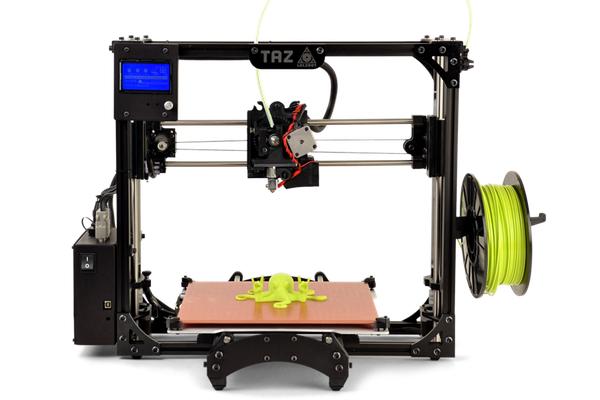 The LulzBot TAZ found itself on top of just about every best-of list in 2015 and it is not hard to see why. The simple, solid build is strong enough to take as much printing as you need it to take, and it just keeps going. LulzBot’s custom version of Cura is widely considered one of the best available, and there are so many features and upgrade options available that the TAZ 5 could conceivably last for years, making it an excellent investment. With its large build area, customizability and with just about every filament available to it, the LulzBot TAZ 5 is truly one of the best 3D printers in this class.
The LulzBot TAZ found itself on top of just about every best-of list in 2015 and it is not hard to see why. The simple, solid build is strong enough to take as much printing as you need it to take, and it just keeps going. LulzBot’s custom version of Cura is widely considered one of the best available, and there are so many features and upgrade options available that the TAZ 5 could conceivably last for years, making it an excellent investment. With its large build area, customizability and with just about every filament available to it, the LulzBot TAZ 5 is truly one of the best 3D printers in this class.
Printer Type: FDM
Material: PLA, ABS, HIPS, PVA, Ninja Flex, Nylon, Exotic materials and almost everything else.
Resolution: 50 Microns
Build Area: 298 x 275 x 250 mm (11.7 x 10.8 x 9.8 inch)
Pros: Large build volume, supports dual extruders, will print almost any material, low maintenance, open source, metal body, customer service
Cons: No enclosed printing area, not for beginners, no auto leveling, no WiFi
Price: $1,825
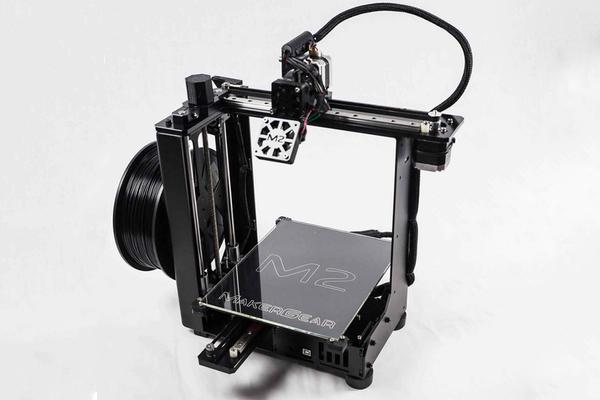 While the MakerGear M2 is not a 3D printer for newbies, if you know what you’re doing it will produce some of the most consistent and high-quality 3D prints around. The M2 is also a workhorse that will print as long as you need it to, and has a shockingly low failure rate. It’s almost impossible to find negative reviews for this 3D printer, from the durable metal construction to the excellent customer support to the ridiculously affordable price, the M2 gets high marks all around.
While the MakerGear M2 is not a 3D printer for newbies, if you know what you’re doing it will produce some of the most consistent and high-quality 3D prints around. The M2 is also a workhorse that will print as long as you need it to, and has a shockingly low failure rate. It’s almost impossible to find negative reviews for this 3D printer, from the durable metal construction to the excellent customer support to the ridiculously affordable price, the M2 gets high marks all around.
Printer Type: FDM
Material: PLA, ABS
Resolution: 25 Microns
Build Area: 203 x 254 x 203 mm (8 x 10 x 8 inch)
Pros: Reliable, high-quality prints, metal body, large build volume, customer support, good value
Cons: Noisy, not for beginners, needs regular calibration and maintenance, no WiFi, no dual extruder option
Price: $2,499
 In terms of the perfect balance between usability and quality, it really doesn’t get any better than the Ultimaker 2+. When it comes to desktop 3D printers, not only does the Ultimaker 2+ find itself on just about every best-of list, but it is often voted as the most desirable desktop 3D printer model on the market. That is not an accident, that is because Ultimaker has built one of the highest-quality desktop 3D printers around, and the community that has built up around the company is more customer support than anyone would ever need. (Although Ultimaker has great customer support as well.)
In terms of the perfect balance between usability and quality, it really doesn’t get any better than the Ultimaker 2+. When it comes to desktop 3D printers, not only does the Ultimaker 2+ find itself on just about every best-of list, but it is often voted as the most desirable desktop 3D printer model on the market. That is not an accident, that is because Ultimaker has built one of the highest-quality desktop 3D printers around, and the community that has built up around the company is more customer support than anyone would ever need. (Although Ultimaker has great customer support as well.)
Printer Type: FDM
Material: PLA, ABS, Exotic materials
Resolution: 20 Microns
Build Area: 223 × 223 × 205 mm (8.7 x 8.7 x 8 inch)
Pros: High-quality prints, fast, easy to use, customer support, helpful community, durable construction
Cons: Steep learning curve, filament feed system needs work, no dual extruder option, no WiFi
Price: $1,990
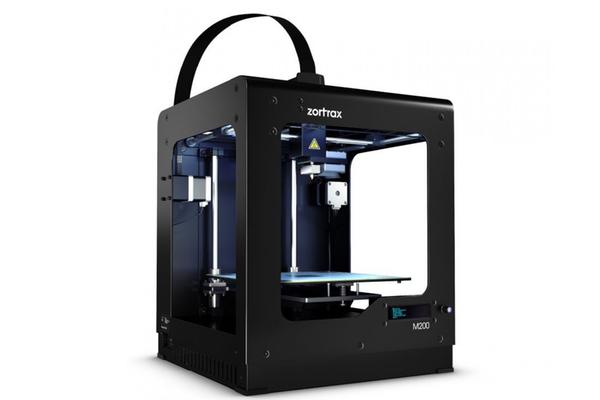 The M200 from Zortrax is the biggest thing to come out of the new but hugely influential Polish 3D printing industry. The M200 has widely been praised for its easy to use design, reliability and its focus on high-temperature materials. This is one of the best 3D printers available in this class, and for the price it is packed full of great features.
The M200 from Zortrax is the biggest thing to come out of the new but hugely influential Polish 3D printing industry. The M200 has widely been praised for its easy to use design, reliability and its focus on high-temperature materials. This is one of the best 3D printers available in this class, and for the price it is packed full of great features.
Printer Type: FDM
Material: ABS, PETG, PCABS, ULTRAT, HIPS
Resolution: 90 Microns
Build Area: 200 x 200 x 185 mm (7.8 x 7.8 x 7.2 inch)
Pros: Easy to use, reliable, build quality, heated bed, optimized for high-temp materials, company name sounds like a Superman villain
Cons: Proprietary materials only, customer service, no WiFi, no dual extruder option
Price: $2,499
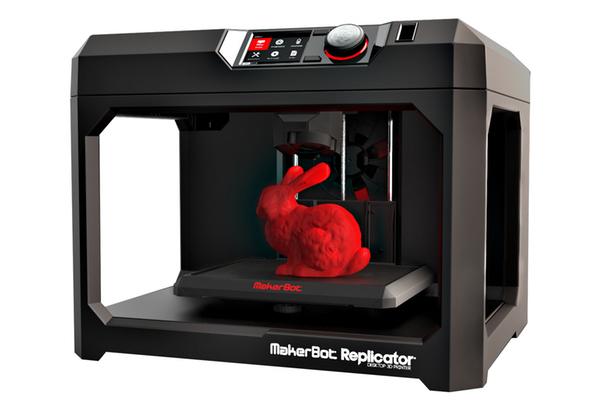 MakerBot is probably the biggest name in desktop 3D printers, and certainly one of the most successful. The original MakerBot kit is largely considered the 3D printer that started the recent desktop craze, and since the company was purchased by Stratasys they have an excellent customer service network. While the Smart Extruder had a lot of issues at launch, the general consensus is that MakerBot has finally got the issue sorted and it works quite well.
MakerBot is probably the biggest name in desktop 3D printers, and certainly one of the most successful. The original MakerBot kit is largely considered the 3D printer that started the recent desktop craze, and since the company was purchased by Stratasys they have an excellent customer service network. While the Smart Extruder had a lot of issues at launch, the general consensus is that MakerBot has finally got the issue sorted and it works quite well.
Printer Type: FDM
Material: PLA
Resolution: 100 Microns
Build Area: 252 x 199 x 150 mm (9.9 x 7.8 x 5.9 inch)
Pros: Good print quality, customer service, easy to use, great software, WiFi-enabled, monitoring cameras, smartphone controllable
Cons: Extruder problems are common, high price tag, closed source, only prints PLA, noisy, inconsistent print quality
Price: $2,500
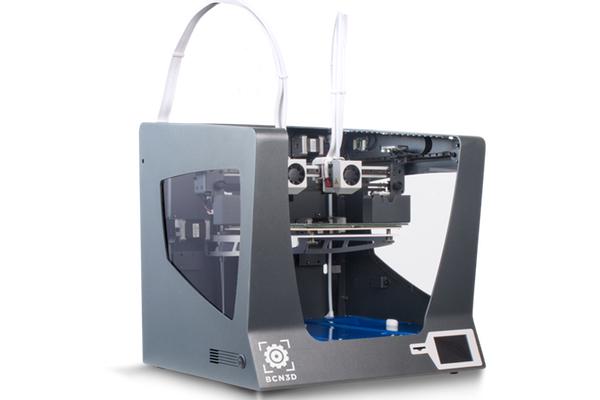 The Sigma from Spanish 3D printer manufacturer BCN3D is a relatively new printer on the market, but it has been getting extremely positive reviews for its high-quality build and easy to use controls. The dual printing heads move independently, which makes them easier to calibrate, clean and prevents part collisions and misprints. There are a ton of material options available, and because everything is open source, there are plenty of things that can be tweaked or upgraded.
The Sigma from Spanish 3D printer manufacturer BCN3D is a relatively new printer on the market, but it has been getting extremely positive reviews for its high-quality build and easy to use controls. The dual printing heads move independently, which makes them easier to calibrate, clean and prevents part collisions and misprints. There are a ton of material options available, and because everything is open source, there are plenty of things that can be tweaked or upgraded.
Printer Type: FDM
Material: PLA, ABS, PVA, HIPS
Resolution: 50 Microns
Build Area: 210 x 297 x 210 mm (8.2 x 11.6 x 8.2 inch)
Pros: Independent dual extruders, high-quality prints, multi-material prints, reliable, heated bed, open source, quality construction and design
Cons: No WiFi, customer service, price
Price: $2,499
 The industry is still trying to work all of the bugs out of All in One (AiO) 3D printers, but the ZEUS is a rare exception that manages to do just about everything right. The 3D scanning function is intuitive and better than just about every other standalone, turntable 3D scanner option available, and the 3D printing function is just as high-quality as other 3D printers in its class and price range. The ZEUS also has a huge range of 3D printing filaments available to it, and it is truly a plug and play 3D printer that can perform virtually every function via its integrated touchscreen controls.
The industry is still trying to work all of the bugs out of All in One (AiO) 3D printers, but the ZEUS is a rare exception that manages to do just about everything right. The 3D scanning function is intuitive and better than just about every other standalone, turntable 3D scanner option available, and the 3D printing function is just as high-quality as other 3D printers in its class and price range. The ZEUS also has a huge range of 3D printing filaments available to it, and it is truly a plug and play 3D printer that can perform virtually every function via its integrated touchscreen controls.
Printer Type: FDM
Material: PLA, Wood PLA, Metal PLA, Conductive
Resolution: 80 Microns
Build Area: 150 x 204 x 145 mm (5.9 x 8 x 5.7 inch)
Pros: Integrated 3D scanner, reliable, WiFi enabled, auto-bed leveling, integrated 3D model search, integrated onboard STL editor, software support, onboard cameras, easy swap extruders, enclosed build area
Cons: Price, small build area, no heated bed, no option without 3D scanner, no dual extruder option
PROSUMER 3D PRINTERS ($2,500 and up)
The prosumer class of 3D printers are generally considered a step between a desktop 3D printer and high-priced, industrial 3D printers. However there are several prosumer 3D printers that are highly sought after by smaller-scale companies looking for industrial quality prints and customer service, and some makers are braving the higher price tags to bring them into their workshops. Prosumer 3D printers are also ideal additions to makerspaces and educational facilities due to their high build quality, long life and service contracts. But the high price price tag also brings with it features, and all of these 3D printers offer some of the best functionality on the market. You really do get what you pay for, and if you need 3D printers capable of dependable, high-volume output then it may be worth going beyond desktop 3D printers and looking into purchasing a prosumer model.
Formlabs Form 2
Price: $3,499
 While there have been a lot of advancements in resin 3D printing, there are still drawbacks that make it ill suited for use in most homes or smaller offices, however the Form 2 is a rare exception. The Form 2 was designed to be incredibly easy to use and has an extremely high build quality. The printing resolution is virtually unmatched, and it has a respectable printing envelope for its class. If you really need a resin 3D printer, then you absolutely cannot go wrong with the Form 2.
While there have been a lot of advancements in resin 3D printing, there are still drawbacks that make it ill suited for use in most homes or smaller offices, however the Form 2 is a rare exception. The Form 2 was designed to be incredibly easy to use and has an extremely high build quality. The printing resolution is virtually unmatched, and it has a respectable printing envelope for its class. If you really need a resin 3D printer, then you absolutely cannot go wrong with the Form 2.
Printer Type: SLA
Material: Resin
Resolution: 25 Microns
Build Area: 145 x 145 x 175 mm (5.7 x 5.7 x 6.8 inch)
Pros: Very high-quality construction, high-quality prints, high-detail prints, easy to use, WiFi enabled, software, customer support, resin material variety
Cons: Proprietary resin materials, messy, high cost of materials
Fusion3 F400
Price: $4,499
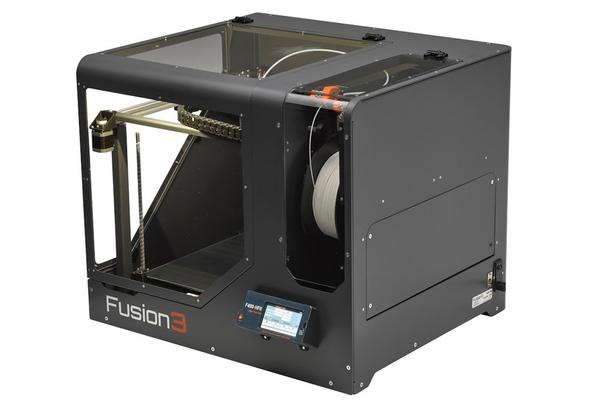 The F400 is the newest model of the fantastic line of industrial quality FDM 3D printers made by Fusion3. The enclosed printing bed helps reduce any smells associated with certain materials, and there are HEPA filter options for use in low-ventilation areas. The F400 can use a wide range of materials, and the customer service is top notch. If you need an industrial quality FDM 3D printer, this is the machine for you.
The F400 is the newest model of the fantastic line of industrial quality FDM 3D printers made by Fusion3. The enclosed printing bed helps reduce any smells associated with certain materials, and there are HEPA filter options for use in low-ventilation areas. The F400 can use a wide range of materials, and the customer service is top notch. If you need an industrial quality FDM 3D printer, this is the machine for you.
Printer Type: FDM
Material: PLA, ABS, PETG, PMMA, Nylon, HIPS, Woodfill, Polycarbonate
Resolution: 50 Microns
Build Area: 360 x 365 x 320 mm (14.2 × 14.4 × 12.6 inch)
Pros: Fast print speed, print quality, large build area, enclosed build area, automatic bed leveling, easy maintenance, lifetime customer support, free Simplfy3D software, WiFi enabled with adaptor add-on, material selection, dual extruder option
Cons: Large footprint, cost, dual extruder option reduces print quality
Type A Machines Series 1 Pro
Price: $4,095
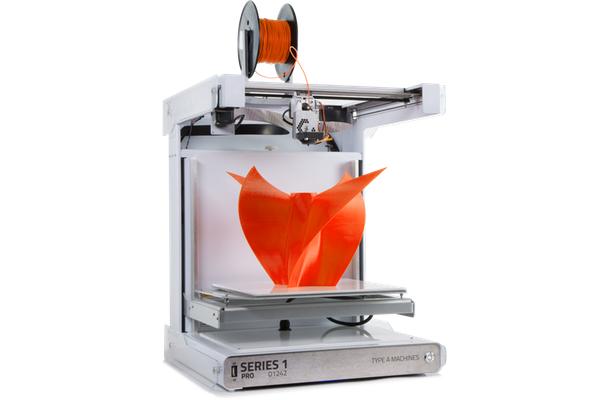 The Series 1 Pro from Type A Machines is a versatile, industrial quality FDM 3D printer that can use virtually any 3D printing filament on the market, has almost all of the features that you would expect a printer of this price range to have and comes with excellent customer support. The Series 1 Pro is also ideal for networking with other 3D printers for use as part of a 3D printer farm or a manufacturing workflow.
The Series 1 Pro from Type A Machines is a versatile, industrial quality FDM 3D printer that can use virtually any 3D printing filament on the market, has almost all of the features that you would expect a printer of this price range to have and comes with excellent customer support. The Series 1 Pro is also ideal for networking with other 3D printers for use as part of a 3D printer farm or a manufacturing workflow.
Printer Type: FDM
Material: PLA, ABS, PET, Nylon, IGUS, Exotic materials
Resolution: 50 Micron
Build Area: 305 x 305 x 305 mm (12 x 12 x 12 inch)
Pros: Large build area, solid frame, quality prints, preset printing temps and profiles for 50+ materials, heated bed, WiFi enabled, easily networked, onboard camera, customer support, modular construction, easy upgrade installation
Cons: Open build area, no dual extruder option, cost, noisy
Markforged Mark Two
Price: $5,499
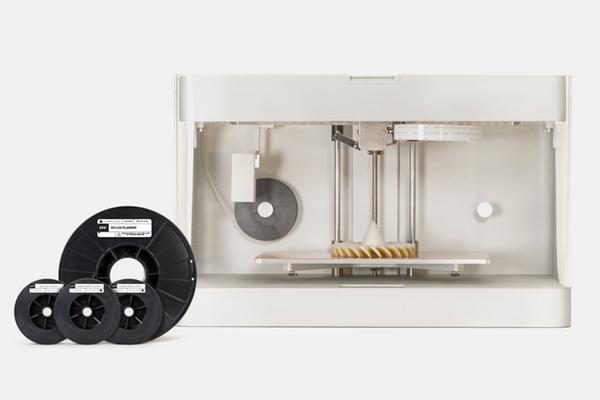 The Mark Two by markforged is a solid and dependable industrial prototyping 3D printer that has been designed to exclusively 3D print high-strength parts. It uses a two 3D extruder system to combine Nylon materials with Carbon Fiber or other materials typically not associated with 3D printability, like Kevlar. This is a powerful industrial quality 3D printer that was made to be used almost exclusively for prototyping or the construction of lightweight but durable parts. This probably won’t find much use in a typical maker’s workshop, but there is no other 3D printer like it on the market.
The Mark Two by markforged is a solid and dependable industrial prototyping 3D printer that has been designed to exclusively 3D print high-strength parts. It uses a two 3D extruder system to combine Nylon materials with Carbon Fiber or other materials typically not associated with 3D printability, like Kevlar. This is a powerful industrial quality 3D printer that was made to be used almost exclusively for prototyping or the construction of lightweight but durable parts. This probably won’t find much use in a typical maker’s workshop, but there is no other 3D printer like it on the market.
Printer Type: CFF (Composite/FDM)
Material: Nylon combined with Carbon Fiber, Kevlar or Fiberglass
Resolution: 100 Microns
Build Area: 320 x 132 x 160 mm (12.5 x 5.2 x 6.3 inch)
Pros: Prints super strong objects, easy to use, excellent software, dual independent heads print composite materials, high-quality construction, fast printing speed, WiFi enabled
Cons: Cost, material cost, limited use beyond prototyping, large foot print, limited material colors
A few notes on the 3DPrint.com 2016 3D Printer Buying Guide. I’ve gathered my selections based on dozens of professional reviews, customer reviews, forum and internet chatter, and my own personal experience. I tried to include printers that would provide users with a solid 3D printing experience, and with a wide enough variety of useful features for whatever role the printer will be playing, be it for personal use, professional use or a little bit of both. Good luck, and happy 3D printing!
Subscribe to Our Email Newsletter
Stay up-to-date on all the latest news from the 3D printing industry and receive information and offers from third party vendors.
Print Services
Upload your 3D Models and get them printed quickly and efficiently.
You May Also Like
Nikon SLM Solutions Sells SLM 500 to Primary Weapon Systems to Expand Suppressor Production
Primary Weapons Systems (PWS) is a Boise, Idaho-based manufacturer of suppressors, firearms, and related components. A subsidiary of Vigilant Gear and a sister company to aftermarket Glock slide manufacturer Lone...
3DPOD 261: Tooling and Cooling for AM with Jason Murphy, NXC MFG
Jason Murphy´s NXC MFG (Next Chapter Manufacturing) is not a generalist service; instead, the company specializes in making tooling. Using LPBF and binder jet, the company produces some of the...
HP and Firestorm Labs Form Partnership to Use Multi Jet Fusion 3D Printers in Deployable Factories
HP Inc., maker of a range of additive manufacturing (AM) solutions including the Multi Jet Fusion (MJF) ecosystem, has announced a partnership with Firestorm Labs, a developer of containerized, deployable...
3D Printing News Briefs, July 2, 2025: Copper Alloys, Defense Manufacturing, & More
We’re starting off with metals in today’s 3D Printing News Briefs, as Farsoon has unveiled a large-scale AM solution for copper alloys, and Meltio used its wire-laser metal solution to...
































